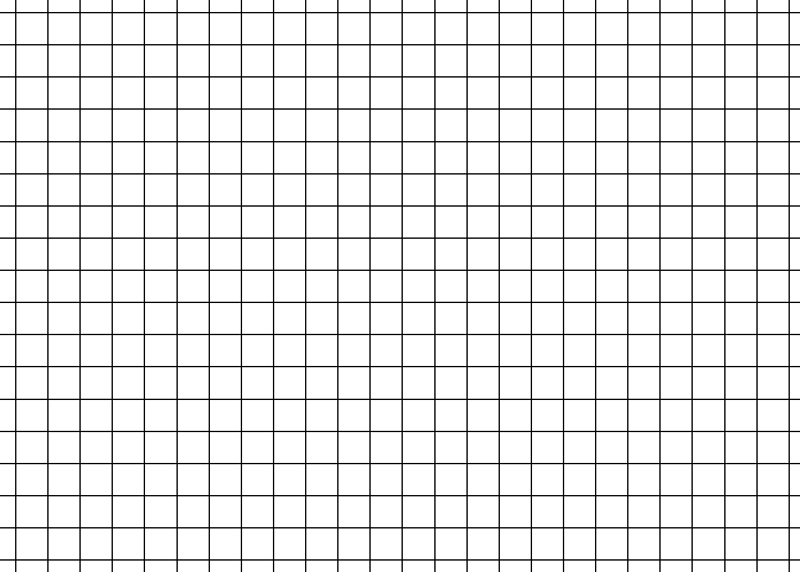dataset
Type of resources
Available actions
Topics
Keywords
Contact for the resource
Provided by
Years
Formats
Representation types
Update frequencies
status
Service types
Scale
Resolution
-
Tämän aineiston tarkemmat metodikuvaukset löytyvät artikkeleista (Holmberg et al. 2023, Junttila et al. 2023). Tässä on kuvattu aineistoa ja sen valmistelua. Tarkoituksena on ollut tuottaa alueellista tietoa maanpeitteen merkityksestä kasvihuonekaasupäästöihin Suomessa. Lähtöaineisto ja metodit rajoittavat tarkkuutta, mutta aineisto soveltuu paikallisten, esimerkiksi maakuntatason ilmiöiden tarkasteluun. Aineisto edustaa lyhyttä ajanjaksoa. Maanpeiteaineisto perustuu rekisteritietoihin ja kaukokartoitusaineistoon vuosilta 2015-2020, lukuun ottamatta maaperäaineistoa, jokia ja järviä. Aineisto on rasterimuotoista ja tallennettu GeoTiff-formaatissa, joka on yhteensopiva useimpien paikkatieto-ohjelmistojen kanssa. Greenhouse gas net emission intensities by land cover category in Finland The methods related to the data published herein are described in detail in the associated publications (Holmberg et al. 2023, Junttila et al. 2023). This file describes the datasets and the data preparation steps. The aim of this data publication is to provide regional assessments of the role of land cover in greenhouse gas emissions in Finland. The results in the publications are reported for the large administrative divisions, the NUTS 3 regions of mainland Finland (Statistics Finland 2023a). While limited by the accuracy of the methods and source data involved, these data can also be used for more local assessments, e.g., at the scale of municipalities. The data represent a temporal snapshot of land cover. Except for the soil maps, rivers and lakes, all land cover data are from the period 2015-2020 and are based on registry data or remote sensing. Data format. The data are distributed as GeoTiff raster files, which can be read using most GIS-software.
-
Maanmittauslaitoksen KM2-korkeusmallin kanssa yhteensopiva korkeusmalli, jossa alkuperäisiä korkeusarvoja on alennettu erityisesti virtavesikohteiden (viivamaiset sekä aluemaiset) ja tieverkoston risteyskohdissa. Alennetut korkeusarvot pyrkivät kuvaamaan virtausreittejä, kuten tierumpuja ja putkia, joita alkuperäisessä KM2:ssa ei ole. Aineisto on tuotettu yhdistämällä useita eri valtakunnan kattavia lähtöaineistoja, joita ovat - korkeusmalli KM2 (Maanmittauslaitos) - Siltojen kansien korkeudet (Syke) - Maastotietokanta (Maanmittauslaitos) - DIGIROAD-tieverkosto (Väylävirasto) - Rumpurekisteri (Väylävirasto) Lisäksi jotkin kunnat ja kaupungit ovat digitoineet Maastotietokannasta puuttuvia virtausreittejä. Korkeusarvot ovat ilmoitettu N2000-korkeusjärjestelmässä. Aineisto on avoin (lisenssi CC BY 4.0). Käyttötarkoitus: Korvaamalla KM2:n korkeusarvot uomakorjausaineiston arvoilla saadaan korkeusmalli, joka soveltuu mm. pintaveden virtauksen mallinnukseen alkuperäistä korkeusmallia paremmin. Tämä mahdollistaa esim. hulevesitulvariskien luotettavamman arvioinnin. Aineisto kuuluu SYKEn avoimiin aineistoihin (CC BY 4.0). Lähde: Syke, Maanmittauslaitos (perustuu Syken, MML:n ja Väyläviraston aineistoihin).
-
This dataset represents the Integrated biodiversity status assessment for seals (grey seal, harbour seal and ringed seal). Status is shown in five categories based on the integrated assessment scores obtained in the tool. Biological quality ratios (BQR) above 0.6 correspond to good status. The status of the seals was assessed using four core indicators: population trends and abundance of seals, distribution of Baltic seals, nutritional status of seals, and reproductive status of seals. In the latter two only grey seals are considered for the 2018 State of the Baltic Sea report. The assessment is based on the one-out-all-out approach, i.e. the species reflecting the worst status in each assessment unit. This dataset displays the result of the integrated biodiversity status in HELCOM Assessment unit Scale 2 (Division of the Baltic Sea into 17 sub-basins). Attribute information: "HELCOM_ID" = ID of the HELCOM scale 2 assessment unit "level_2" = Name of the HELCOM scale 2 assessment unit "EcosystemC" = Ecosystem component analyzed "BQR" = Biological Quality Ratio "Conf" = Confidence of the assessment "Total_indi" = Number of indicators used "% of area assessed" = Share of the total assessed area "D1CX" = MSFD descriptor 1 criteria X "conf_D1CX" = Confidence for MSFD descriptor criteria X "Confidence" = Conifdence of the assessment ("high"/ "moderate"/ "low") "STATUS" = Status of the assessment (0-0.2 = not good (lowest score), 0.2-0.4 = not good (lower score), 0.4-0.6 = not good (low score), 0.6-0.8 = good (high score, 0.8-1.0 = good (highest score))
-
KUVAUS Herkät vesistöt, joiden rajaus on luotu Viherkertoimen käyttöä varten. Viherkerroinmenetelmä on ekologinen suunnittelutyökalu tonttien viherpinta-alan arviointiin, minkä avulla etsitään vaihtoehtoisia ratkaisutapoja kaupunkivihreän lisäämiseen sekä hulevesien hallintaan. Määritellyillä alueilla huleveden laadulliseen hallintaan on kiinnitettävä erityistä huomiota. Aineisto perustuu hulevesiohjelmassa määritettyihin osavaluma-alueisiin, joiden avulla aineisto on rajattu. Aineisto on päivitetty 12/2023 vastaamaan uuden hulevesiohjelman valuma-alueita. Hulevesiohjelmaan liittyvän aineiston lisäksi rajausta on arvioitu asiantuntijoiden toimesta. KATTAVUUS Koko kaupunki PÄIVITYS Aineisto on laadittu viherkertoimen käyttöön ja päivittyy tiedon tarkentuessa. YLLÄPITOSOVELLUS Aineisto on tallennettu PostgreSQL-tietokantaan ja ylläpidetään QGIS-ympäristössä. KOORDINAATISTOJÄRJESTELMÄ Aineisto tallennetaan ETRS-GK24 (EPSG:3878) tasokoordinaattijärjestelmässä. GEOMETRIA Aluemainen SAATAVUUS Aineisto on saatavilla WFS- ja WMS2-rajapinnoilta. JULKISUUS, TIETOSUOJA. Avoin aineisto. VASTUUTAHO Ympäristönsuojeluyksikkö (ymparistonsuojelu@tampere.fi) KENTÄT vesisto: vesistöalueen nimi
-

Grid net for statistics 5 km x 5 km covers whole of Finland. The grid net includes all grid cells in Finland. The location reference of a grid cell is the coordinates of the bottom left corner of each grid cell. An identifier in accordance with national conventions (consecutive numbering) has also been produced for each grid cell. The Grid net for statistics 5 km x 5 km is the area division used in the production of statistics by 5 km x 5 km grid cells. For utilizing grid data auxiliary table of regional classifications are available: https://www.stat.fi/org/avoindata/paikkatietoaineistot/tilastoruudukko_5km_en.html. The general Terms of Use must be observed when using the data: https://tilastokeskus.fi/org/lainsaadanto/copyright_en.html. In addition to the national version, an INSPIRE information product is also available from the data.
-

FIN Aineiston tarkoituksena on: -Identifioida tie- ja rata-alueet, joiden varrella esiintyy uhanalaisia ja silmälläpidettäviä lajeja -Identifioida tie- ja rata-alueet, joiden varrella esiintyy hyviä elinvoimaisia niittyindikaattorilajeja (hyönteisten mesi- ja ravintokasveja) -Identifioida tie- ja rata-alueet, joiden varrella esiintyy suojelualueita -Identifioida tie- ja rata-alueet, joiden varrella esiintyy komealupiinia tai kurtturuusua -Identifioida tie- ja rata-alueet, joiden varrella esiintyy komealupiinia tai kurtturuusua uhanalaisten lajien lisäksi -> Löytää herkät alueet ja paikallistaa vieraslajien uhka Tieto esitetään 1 kilometrin ruuduissa. Aineistosta on julkaistu kaksi erillistä versiota. -VaylanvarsienVieraslajitJaArvokkaatElinymparistot_avoin: Avoin versio, jonka lajitietoa on karkeistettu mahdollisista herkistä lajeista johtuen. Aineisto kuuluu SYKEn avoimiin aineistoihin (CC BY 4.0) ja sitä saa käyttää lisenssiehtojen mukaisesti -VaylanvarsienVieraslajitJaArvokkaatElinymparistot_kayttorajoitettu: Alkuperäinen karkeistamaton versio. Tämä versio on vain viranomaiskäyttöön eikä kyseistä aineistoa saa jakaa Aineistosta on tehty tarkempi menetelmäkuvaus https://geoportal.ymparisto.fi/meta/julkinen/dokumentit/VierasVayla_Menetelmakuvaus.pdf sekä muuttujaseloste https://geoportal.ymparisto.fi/meta/julkinen/dokumentit/VierasVayla_VariableDescription.xlsx ENG The purpose of the material is to: -Identify road and rail areas that have nearby observations of endangered and near threatened species -Identify road and rail areas with good meadow indicator plant species -Identify road and rail areas along which there are protected areas -Identify the road and rail areas along which there are observations of Lupinus polyphyllus or Rosa rugosa observations -Identify the road and rail areas along which there are Lupinus polyphyllus or Rosa rugosa observations in addition to sensitive species -> Finds sensitive areas and identify the overall threat of alien species The data is presented in 1-kilometer square grid cells. There are two separate versions of the data. -VaylanvarsienVieraslajitJaArvokkaatElinymparistot_avoin: Open access version, in which its species-related parts have been simplified due to data restriction issues. The material belongs to Syke's open materials (CC BY 4.0) and may be used in accordance with the license terms. -VaylanvarsienVieraslajitJaArvokkaatElinymparistot_kayttorajoitettu: Original version. This version is only for official use and the material in question may not be shared. A more precise description about the data procedures can be found from (In Finnish) https://geoportal.ymparisto.fi/meta/julkinen/dokumentit/VierasVayla_Menetelmakuvaus.pdf Furthermore, all the variables in the data are explained in this bilingual variable description https://geoportal.ymparisto.fi/meta/julkinen/dokumentit/VierasVayla_VariableDescription.xlsx This dataset was updated with the newest species observations on 10/2023 and 11/2024 Process code for this can be found from https://github.com/PossibleSolutions/VierasVayla_SpeciesUpdate
-
This dataset represents the integrated assessment of hazardous substances in the Baltic Sea in 2011-2016, assessed using the CHASE tool (https://github.com/helcomsecretariat/CHASE-integration-tool). The integration is based on hazardous substances core indicators covering concentrations of hazardous substances. This dataset displays the result of the assessment in HELCOM Assessment unit Level 3 (Division of the Baltic Sea into 17 sub-basins and further division into coastal and offshore areas). Attribute information: "HELCOM_ID" = ID of the HELCOM scale 3 assessment unit "country" = Country/ opensea "level_3" = Name of the HELCOM scale 3 assessment unit "area_km2 = Area of the HELCOM scale 3 assessment unit "AULEVEL" = Scale of the assessment units "coastal" = Code of scale 3 HELCOM assessment unit "Input" = Contamination ratio of the assessment unit (Higher score indicates higher contamination) "Confidence" = Confidence of the assessment (Low/ Moderate/ High/ Not assessed) "Status" = Status value for the assessment (= 1.0: Low contamination score, > 1.0: High contaminantion score)
-
-
The EMODnet (European Marine Observation and Data network) Geology project (http://www.emodnet-geology.eu/) collects and harmonizes marine geological data from the European sea areas to support decisionmaking and sustainable marine spatial planning. The partnership includes 39 marine organizations from 30 countries. The partners, mainly from the marine departments of the geological surveys of Europe (through the Association of European Geological Surveys- EuroGeoSurveys), have assembled marine geological information at a scale of 1:100 000 from all European sea areas (e.g. the White Sea, Baltic Sea, Barents Sea, the Iberian Coast, and the Mediterranean Sea within EU waters). This data includes the EMODnet seabed substrate map at a scale of 1:100 000 from the European marine areas. Traditionally, European countries have conducted their marine geological surveys according to their own national standards and classified substrates on the grounds of their national classification schemes. These national classifications are harmonized into a shared EMODnet schema using Folk's sediment triangle with a hierarchy of 16, 7 and 5 substrate classes. The data describes the seabed substrate from the uppermost 30 cm of the sediment column. The data has been generalized into a target scale (1:100 000). The smallest cartographic unit within the data is 0.05 km2 (5 hectares). Further information about the EMODnet-Geology project is available on the portal (http://www.emodnet-geology.eu/).
-
 Paikkatietohakemisto
Paikkatietohakemisto